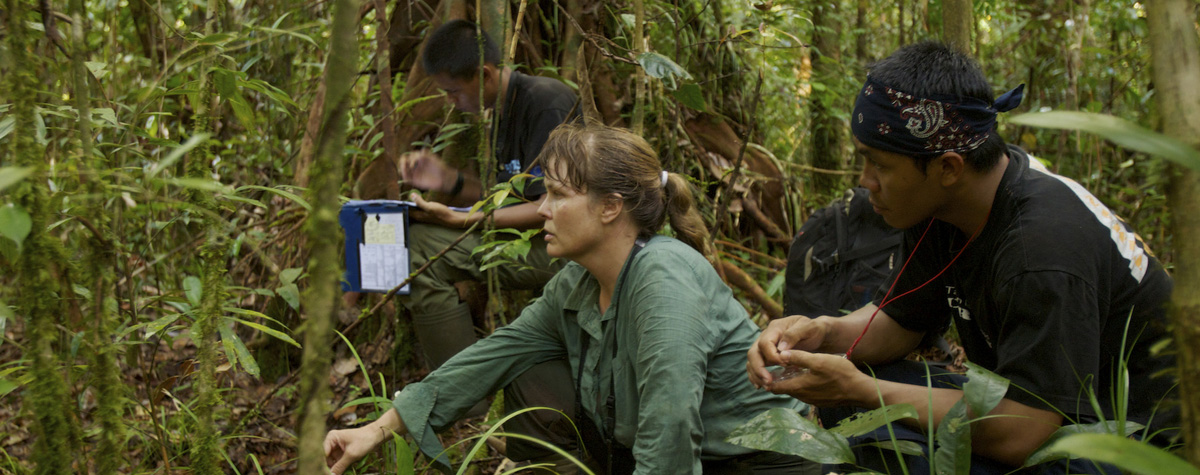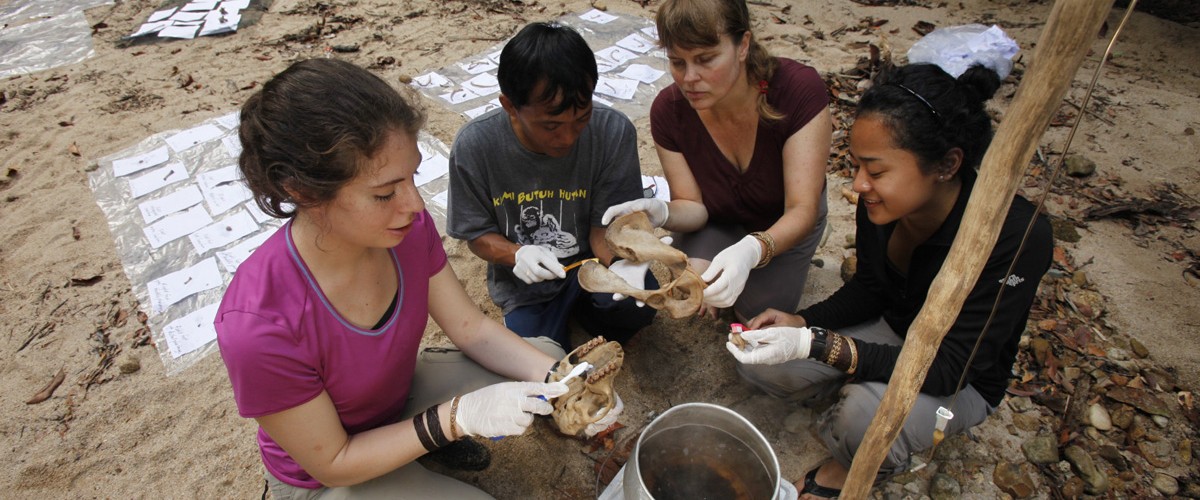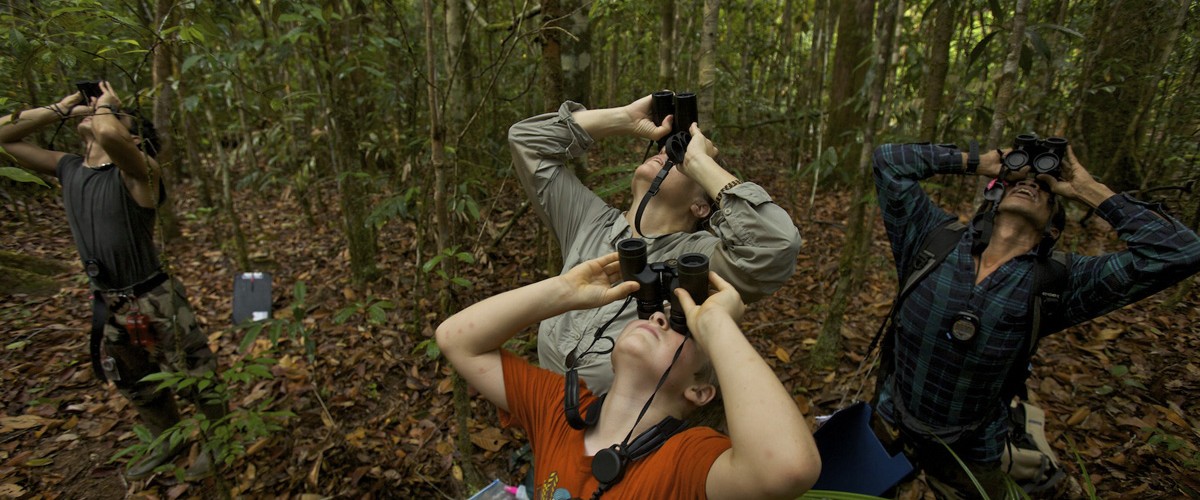By Ella Brown, Research Manager
I have been the Research Manager for the Gunung Palung Orangutan Project since April 2019. Sadly, I am not in the field anymore, but continuing to help the project as much as I can from my home in America. I have managed a variety of data collection methods for the past year, all aimed at answering questions about orangutan health, development, and behavior. One of my favorites has been the implementation of a laser camera project. You may be surprised to read about lasers in the context of orangutan research, but this is actually an ingenious way for us to track the growth of orangutans without having to get close to them. Bodily measurements are vital to understanding how young orangutans grow and can help answer questions about adult body size and cheek flange development. Obviously, we cannot walk up to a wild orangutan and get out a ruler to measure different parts of their body. One reason to mention this, in the current context, is that humans and orangutans are able to exchange illnesses. We therefore have to be clever in the way we approach these measurements to ensure both we and the orangutans stay at a safe distance from one another. Amazingly, we can take these measurements from a photo of an orangutan – using a contraption that affixes two parallel lasers atop a camera.


Each time we take a picture, we make sure the lasers are turned on and visible either on or near the orangutan’s body. These are low-power lasers that don’t pose a danger for people or animals. We need to make sure that within each photo we take, the two laser points are visible. It is vital that we know the millimeter distance between the laser points – if the lasers are perfectly aligned, no matter how far away they are pointing, the distance between the points will never change. This means that within the photo we take of an orangutan, the laser points will be at a known distance apart. This is a vital part of our calculations to estimate body size because we can use this distance to create a scale within the photo. We can use a computer program to easily measure the number of pixels along a line within a photo. For our purposes, we measure the pixel distance between the two laser points, visible in our photo of an orangutan. This means that we now have the millimeter distance between the lasers as well as the pixel distance between the laser points in the photo.
Using simple math, we can use these numbers to calculate a millimeter-to-pixel ratio, determining how many pixels are along a one-millimeter line within the photo. Then, we can use the same computer program to count the number of pixels along the length of an orangutan body part. We have been focusing on forearm lengths and cheek flange widths. So, once we have the length of a forearm or width of a flange in pixels, we can use our previously calculated scale to convert this into millimeters. And there we have it, the estimated measurement of part of a wild orangutan’s body.


In real-life conditions, we have to do a lot of calibration to make sure we confidently know the millimeter distance between the lasers. When we carry the camera into the field, for instance, there is no way to avoid jostling of the camera and lasers. Often, this can result in the lasers becoming slightly divergent, meaning that they are no longer at our known millimeter distance apart. This is an extremely important factor to take into account because the fixed distance between the lasers can make or break the calculation. If you use an incorrect millimeter value from the very beginning, then your ultimate bodily measurements will be completely wrong. Therefore, during my year in the field, we have implemented various methods to calibrate and check the distance between the lasers in real time. With our method in place, we now aim to create a database of forearm lengths and flange widths for all the individuals we study. In the future, we can use this information to gain so much more insight into growth rates, health status, and development of the wild orangutans in Gunung Palung.
These data are just one of the many that I helped to manage and collect during my time in Gunung Palung. I had an incredible year filled with hard work, exhaustion, and unforgettable moments that made it all worth it. I had never worked with wild orangutans before (only those in captivity), and this experience has opened my eyes to even more traits that make them extraordinary. For example, they seem to be able to remember the location of particular fruit trees, even years after they last visited. They also play a vital role in sustaining the life of the forest, dispersing seeds so new trees will grow.

Due to the current pandemic, I decided to leave the field three weeks earlier than originally planned, and return to America. I am lucky that I was able to book a ticket at such short notice and return home safely. I know that many people abroad during this time were not so lucky, and were unable to get flights home for extended periods of time. I am thinking about the team working in Gunung Palung every day, and send them my well wishes. I know they are taking all the necessary precautions to prevent the spread of COVID-19 to both themselves and the orangutans. We will get through this together.









